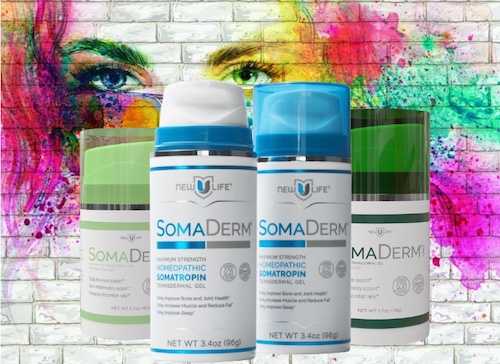If you’re looking for healthy animal protein, nothing on Earth beats seafood. But it can be hard to know what to eat. There’s mercury in the tuna, bycatch on the shrimp boats and pesticides in the salmon ponds.
Isn’t there something you can just order at a restaurant, or buy at the fish counter, without worrying about heavy metals and the future of our oceans?
You bet there is. Shellfish — specifically, bivalves like clams, oysters, mussels and scallops — are nutrition-packed and an environmental success story. Sustainable farming of these mollusks has boomed, making them one of the best options for a seafood-hungry world.
So sidle up to the raw bar or steam some mussels. You might be surprised by the health benefits.
Are shellfish healthy?
Put simply: Clams and oysters are some of the most nutrient-rich animals on the planet, just behind small fish like sardines and anchovies. (Crustaceans like lobsters and crabs are also in the shellfish category but are much less nutritious.)
Mussels top the list for nutrients, said Christopher Golden, an expert on planetary health and aquatic foods at the Harvard T.H. Chan School of Public Health. A single serving holds all the vitamin B12 and omega 3 fatty acids you need for a day, along with three quarters of your zinc and iron. Next would be oysters, he said, followed by clams and scallops.
Bivalves are low in fat, high in protein and, unlike much other seafood, generally free of environmental contaminants like mercury. That’s because they’re near the bottom of the food chain and, as a rule, don’t live long.
No seafood is entirely risk free, of course. Raw oysters can contain harmful bacteria. There are also rare instances of other types of contamination in bivalves, caused by algal blooms or sewage releases — but these are carefully monitored in the United States, said Konstantine Rountos, a marine ecologist at St. Joseph’s University in New York.
Scientists have also found that many filter feeders take in high levels of microplastics from the ocean, though it’s not clear if that poses a hazard to humans. Partly that’s because some mollusks spit them right back out — the Eastern oyster, for example, is a particularly picky eater. “They might just literally pass it through without ever actually ingesting it,” explained Dr. Rountos.
Allergies are another concern. Around 3 percent of adults (and 1 percent of children) are allergic to shellfish. Bivalves aren’t closely related to crustaceans like lobsters and shrimp. But they do contain similar allergens, like the protein tropomyosin, which can trigger reactions.
Is eating shellfish healthy for the planet?
Aquaculture of oysters, clams and other bivalves has doubled over the last two decades, pushing out more destructive fishing methods. Around 90 percent of bivalves are now farmed.
This is cause for celebration, Dr. Golden said. “If you look at a global scale,” he said, “shellfish are the most sustainably produced type of seafood.”
Most shellfish in American markets are not threatened or endangered (though this is not true in all countries). You do not need any fertilizers or pesticides to grow bivalves, or really any food at all. As filter feeders, they find their own meals, often while making the water around them cleaner.
In addition, clams and oysters can actually help the climate by pulling out carbon suspended in the water. And it’s not just the animals that clean their environments; their farmers do as well, said Luke Gardner, an aquaculture expert with the research organization California Sea Grant. Shellfish growers are often the strongest advocates for clean water regulations in their communities, he said, often organizing local restoration projects.
“You can’t farm in dirty water,” he said. “Oyster farmers are environmentalists — at heart and for business.”
How to enjoy shellfish
When shopping for bivalves, follow a few simple rules, said Dr. Gardner.
First, look for products from the United States, which has strict aquaculture regulations. Second, the shell should be closed before they are cooked. If a clam, oyster or mussel is open, tap it to see if it closes. If it doesn’t, don’t buy it; it may have been dead for a while. Third, sniff it.
“It’s a basic thing,” Dr. Gardner said. “If it smells bad, don’t eat it. Seafood should not smell bad.” And make sure it’s been stored in a cold place, he added: “If you’re getting it from a friend out of the back of his trunk, don’t eat it.”
Canned shellfish are fine, if you need something shelf stable, Dr. Rountos said. They may be marginally lower in some nutrients but higher in others. Also, he added, it can be harder to know for sure where canned seafood comes from.
“Nothing beats fresh local seafood from areas with good water quality,” he said.
Because bivalves contain so many nutrients, Dr. Golden said, it doesn’t take a lot to make a healthy meal. Their flavors go a long way, too, in classics like linguine with clam sauce — made with fresh or canned clams — or clam chowder.
Or try scallops, which are fattier and have a meatier taste, almost like prawns. Dr. Golden suggested building a meal around them, or swapping them into your favorite shrimp recipe and seeing how it goes.
All the experts said that bivalves were now a go-to seafood in their homes, but they were split on how to cook them. Dr. Rountos loves hard clams, like littlenecks, casino style. Dr. Gardner and Dr. Golden are purists, preferring them without heavy sauces or even lemon.
Dr. Gardner admitted raw oysters could take a little getting used to — and recommended small ones that go down easy.
“Don’t look at it!” he said. “Just gulp it down and eat it.”
Here are some recipes from NYT Cooking to help you enjoy shellfish at home:

